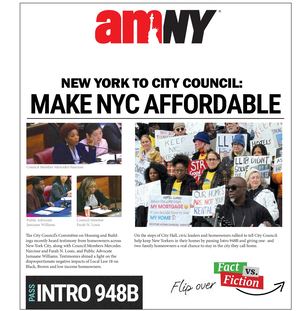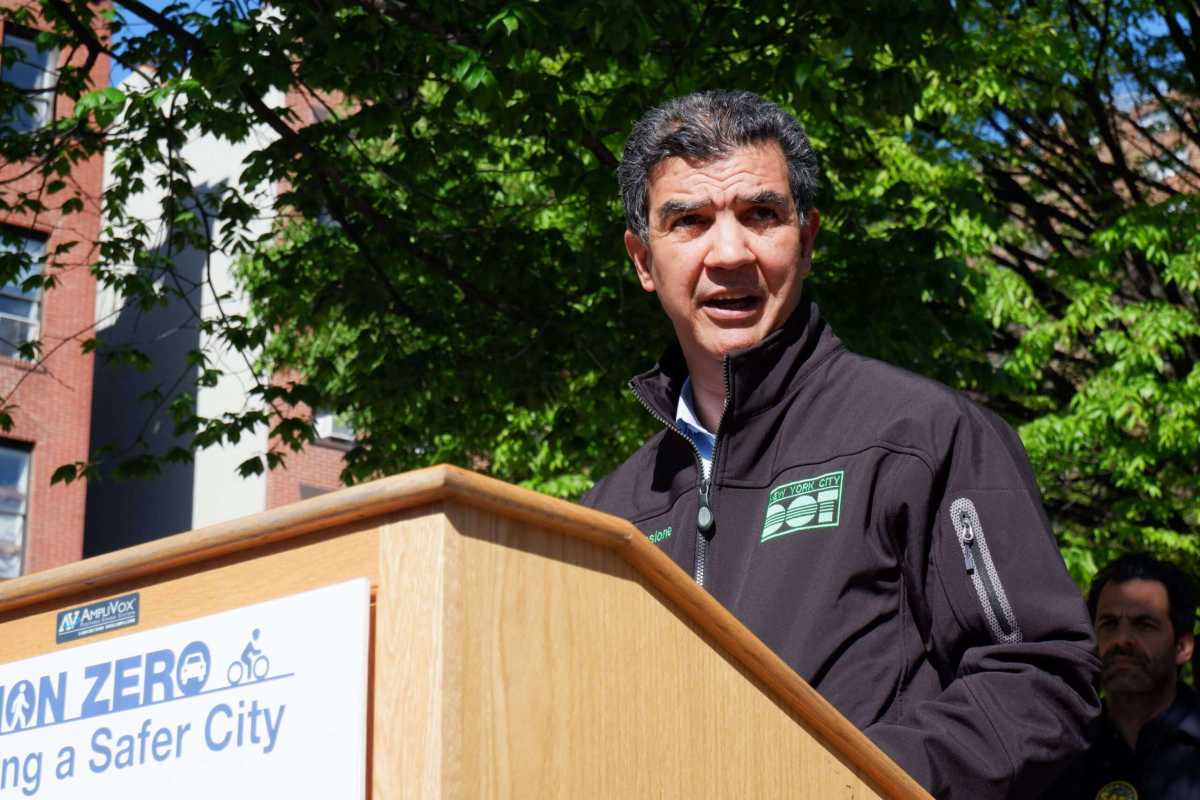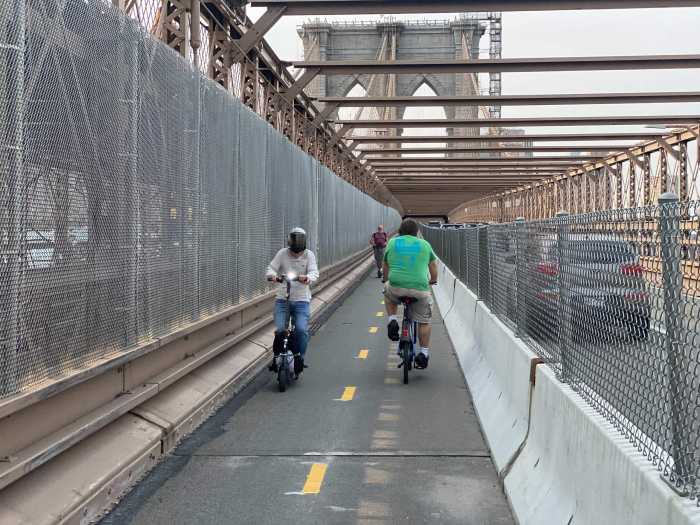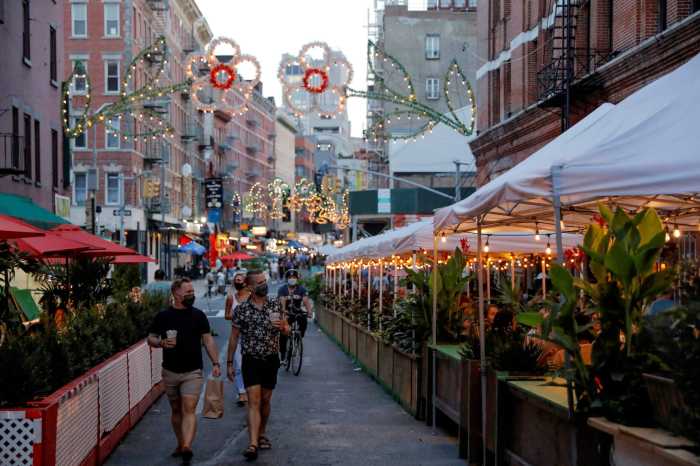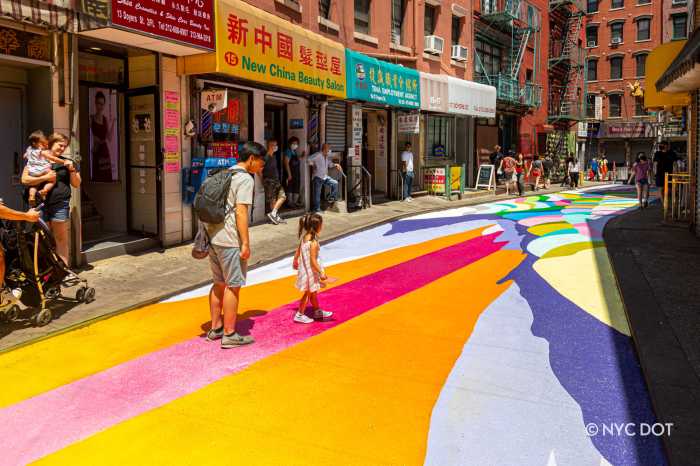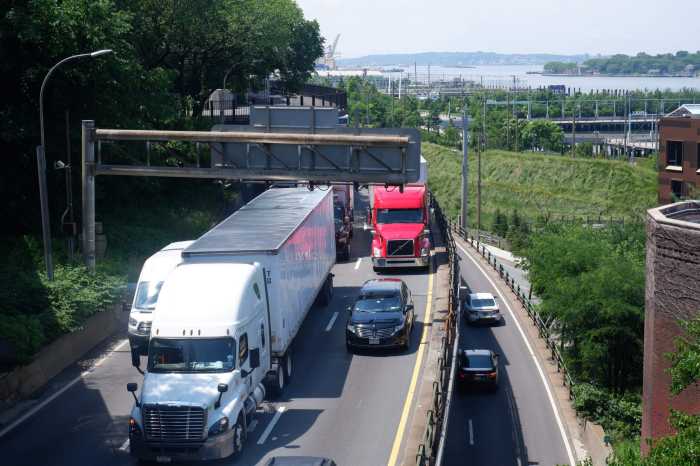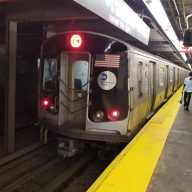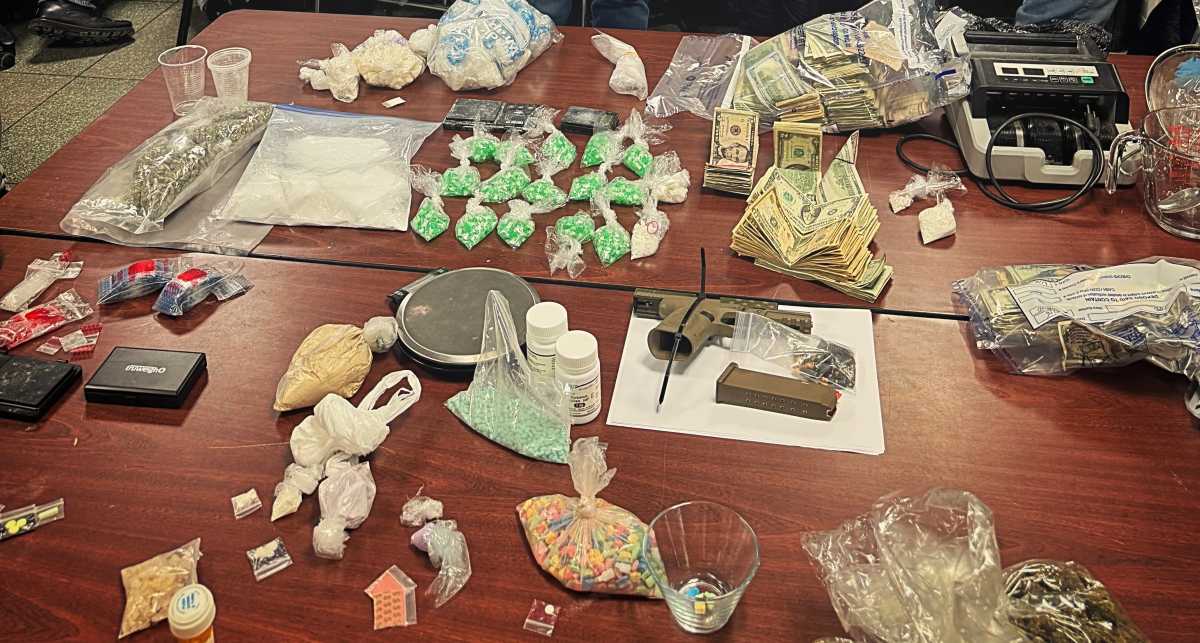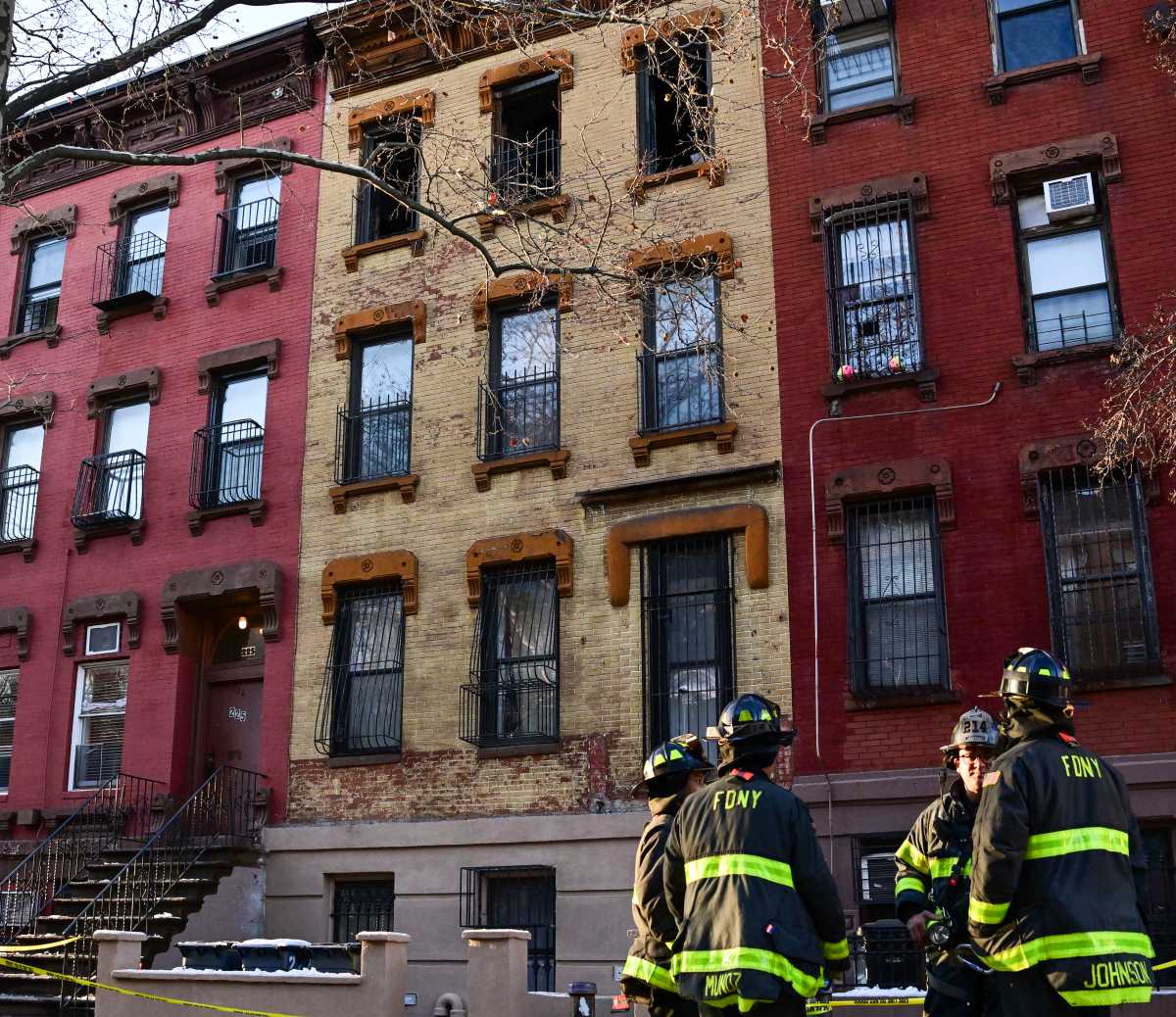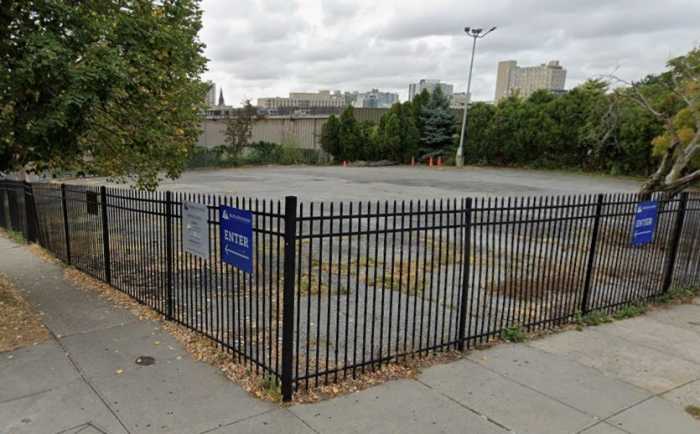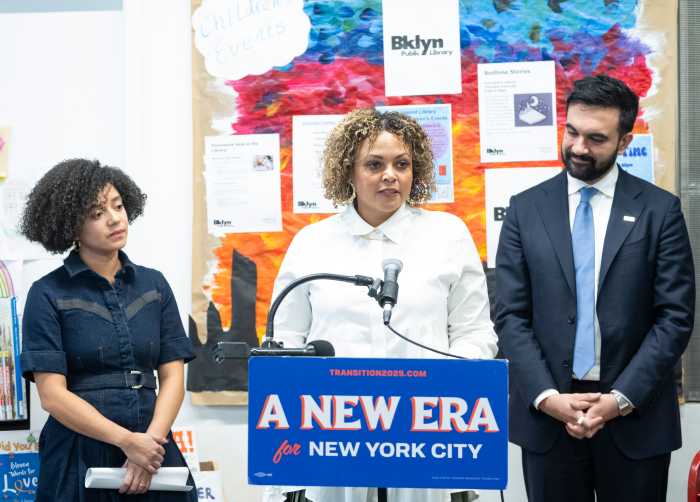Department of Transportation Commissioner Ydanis Rodriguez called on motorists to slow down and be extra careful when making left turns, after a taxi driver mowed down a cyclist and injured at least three more pedestrians during a horrific crash in NoMad Monday.
The DOT chief on Tuesday wouldn’t say whether his agency will add any new physical safeguards to the intersection on Broadway and W. 29th Street where the cabbie hit the biker after turning left, dragged him down the street, and continued to jump the curb and pin two pedestrians on the sidewalk beneath his vehicle.
“When it comes to redesigning our intersections, I’m happy with the work that we’re doing,” Rodriguez told reporters during an unrelated press conference in the Bronx on June 21. “We will continue doing work, but the message is: drivers slow down when you drive and especially when you make a left turn.”
“The reality is left turns is something that all drivers should be careful,” Rodriguez said. “There is less visibility when drivers make a left turn.”
Rodriguez cited the 1,000 intersections he and Mayor Eric Adams committed in January to overhauling this year, which DOT has said they were “well past the halfway mark” last week, but the DOT honcho didn’t clarify whether that section of Broadway was on the list for an upgrade.
At least three of the six people wounded were seriously injured in the crash, and two were visiting from Ohio and another two were from Mexico, Mayor Adams told reporters Monday evening.
The mayor said the following day that he would leave it up to Rodriguez and his street planners to decide whether Broadway will be part of those redesigns.
“It’s part of his plan to come forward and tell me what’s the best way to do it. I have a lot of faith in Ydanis,” Adams said during an unrelated press conference in Brooklyn Tuesday afternoon.
The mayor also claimed that the cyclist in the crash had broken a red light, according to a video of the incident hizzoner reviewed.
The NYPD press office did not provide video footage of the incident, saying it was still under investigation.
“When I looked at the video yesterday, I was disappointed to see that the bicyclist went through the red light, that was troubling,” Adams said. “So it’s human error, human recklessness, and street redesign — that’s the combination and that is why we are redesigning streets.”
The cab’s license plate had 18 parking and camera violations since late 2019, mostly in Manhattan and some in Queens, including twice for failing to stop at red lights and eight times for speeding in school zones, according to a search of public records using the bot How’s My Driving NY.
Concrete action
Street safety advocates have pushed the city to do more to design Gotham’s roads in a way that makes it difficult even for reckless or intoxicated drivers to cause harm to others, rather than focus on admonishing them for driving dangerously on a street that’s designed to let them do so.
Two blocks further south, from W. 27th to W. 25th, Broadway is closed to car traffic daily as part of DOT’s Open Streets program, and activists called on the city to further restrict traffic on Broadway.
“A car-free Broadway would have prevented this heinous crash,” said Danny Harris, executive director of Transportation Alternatives, in a statement.
“Whether it’s building truly protected bike lanes, cracking down on reckless drivers, or building car-free streets, New York City has the tools to keep our streets safe,” Harris added. “But when elected leaders hold back these tools or lack the political will to get these done, the consequences on our streets are horrific.”
The cab driver reportedly cut the corner before hitting the cyclist, a witness told the New York Post.
The corner at W. 29th has a bike lane which DOT classifies as “protected,” but it is separated from cars only by paint and plastic flappers. There is also a row of parked cars and an outdoor dining structure next to the bike path further down the block, but that wall of vehicles doesn’t extend to the intersections.
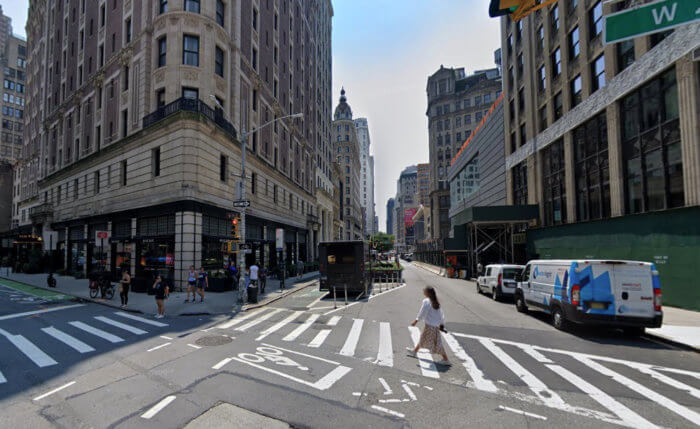
The city must shift gears to building out more sturdy protections to separate drivers and “calm” traffic, said another safe street advocate.
“There’s a proven way all over the world to send the ‘slow down’ message to drivers, and that’s with hard infrastructure — a steel bollard, a concrete block,” said Jon Orcutt, director of advocacy for the group Bike New York.
“Those things make drivers slow down, and words and flex posts do not, so it’s time for New York to get real about traffic calming,” Orcutt added.
DOT has been redesigning sections of Broadway as part of its so-called “Broadway Vision” project, but the stretch between Madison Square Park and Herald Square has not been part of that scheme.
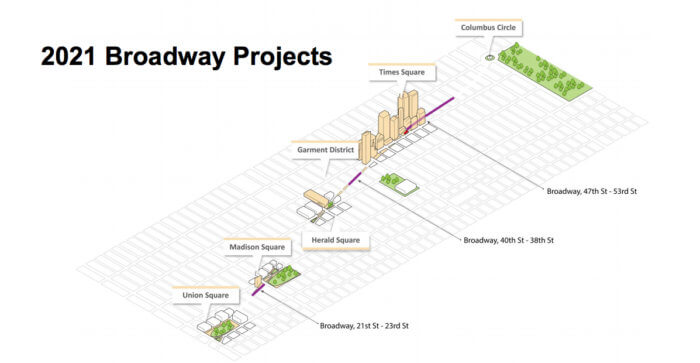
The agency will have more information to share soon on this part of Broadway, DOT spokesperson Vin Barone told amNewYork Metro in an email.
Left less protected
A look at traffic crash statistics on the seven-block stretch of Broadway between the two pedestrian plazas at W. 32nd and W. 25th street shows that the left turns have flimsier safety infrastructure and higher collision and injury numbers.
All but one of the intersections with right turns have concrete pedestrian islands and crash injury numbers for the last 11 years are mostly in the single digits.
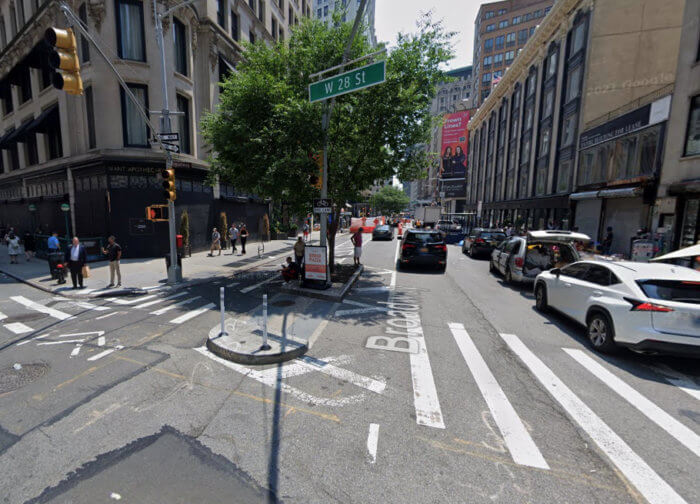
Meanwhile, the left turns merely have plastic polls — or in one case an added plastic ridge below them — and they have had at least 13 crashes apiece and as many or more injuries. A pedestrian was killed in a crash at W. 27th Street, which is a left turn.
Orcutt, who also served at DOT under former Mayor Michael Bloomberg, said one of the issues why the agency mostly resorts to paint, plastic, or rows of parked cars for street safety upgrades is because larger and more sturdy additions can trigger additional and lengthy bureaucracy by getting the Department of Design and Construction involved.
“When you really rebuild a street or an intersection and you have to go under the street to change drainage and stuff, that’s DDC,” Orcutt said. “So DOT will do a plan and hand it off to DDC and it often takes a decade to do the work.”
“It’s a problem, we need to fix that. We should have some intermediate thing where we can come in and do physical changes — and not just paint and plastic — in less than 10 years,” he added.
The city should also install more hard bollards as are common in other cities around the world, the advocate said.
“If you ever go to Amsterdam, it’s like a forest of steel posts,” so Orcutt. “Amsterdam isn’t safe because Dutch drivers are great, it’s safe because they physically keep drivers out of the space that other users use.”
